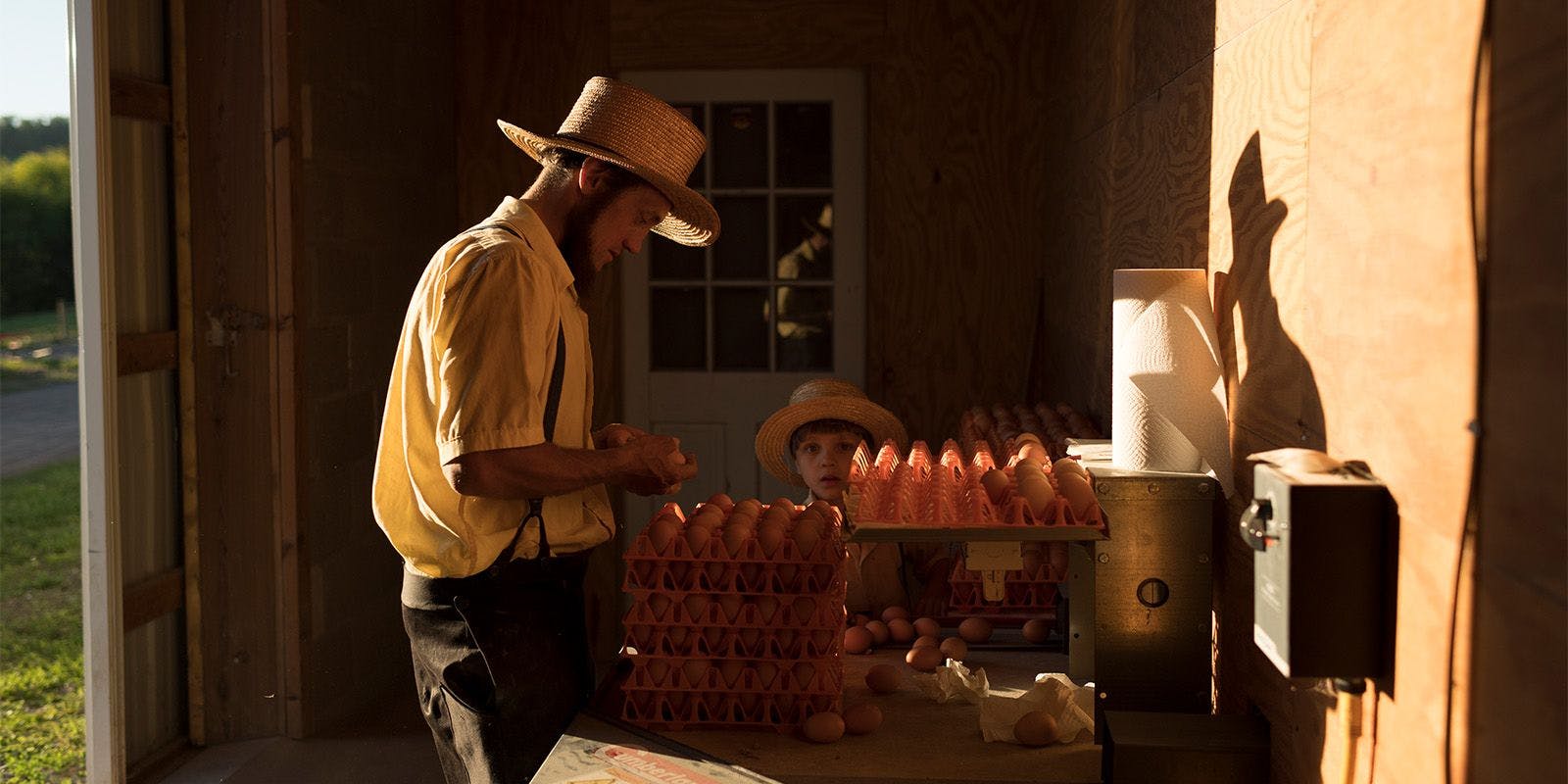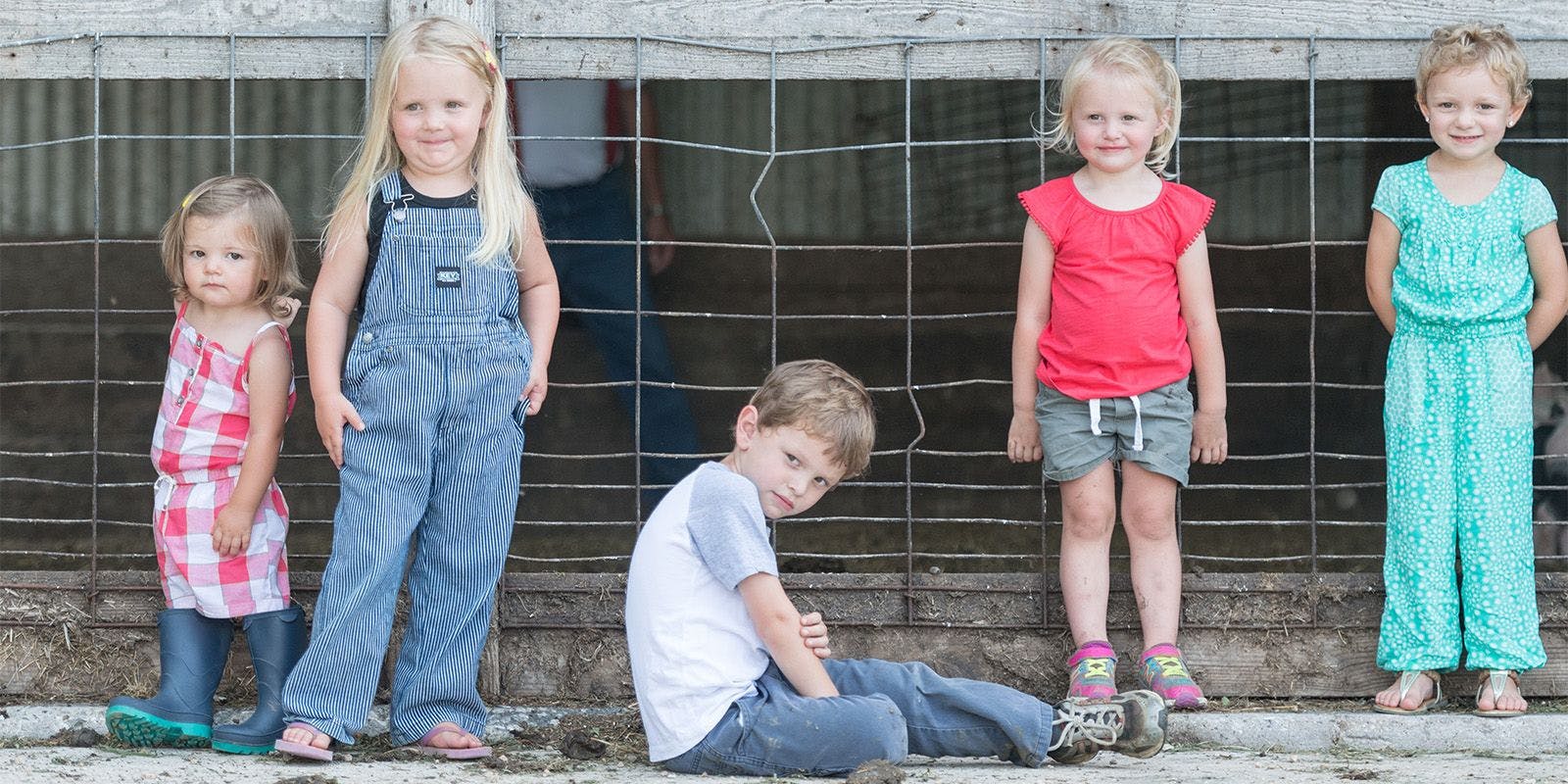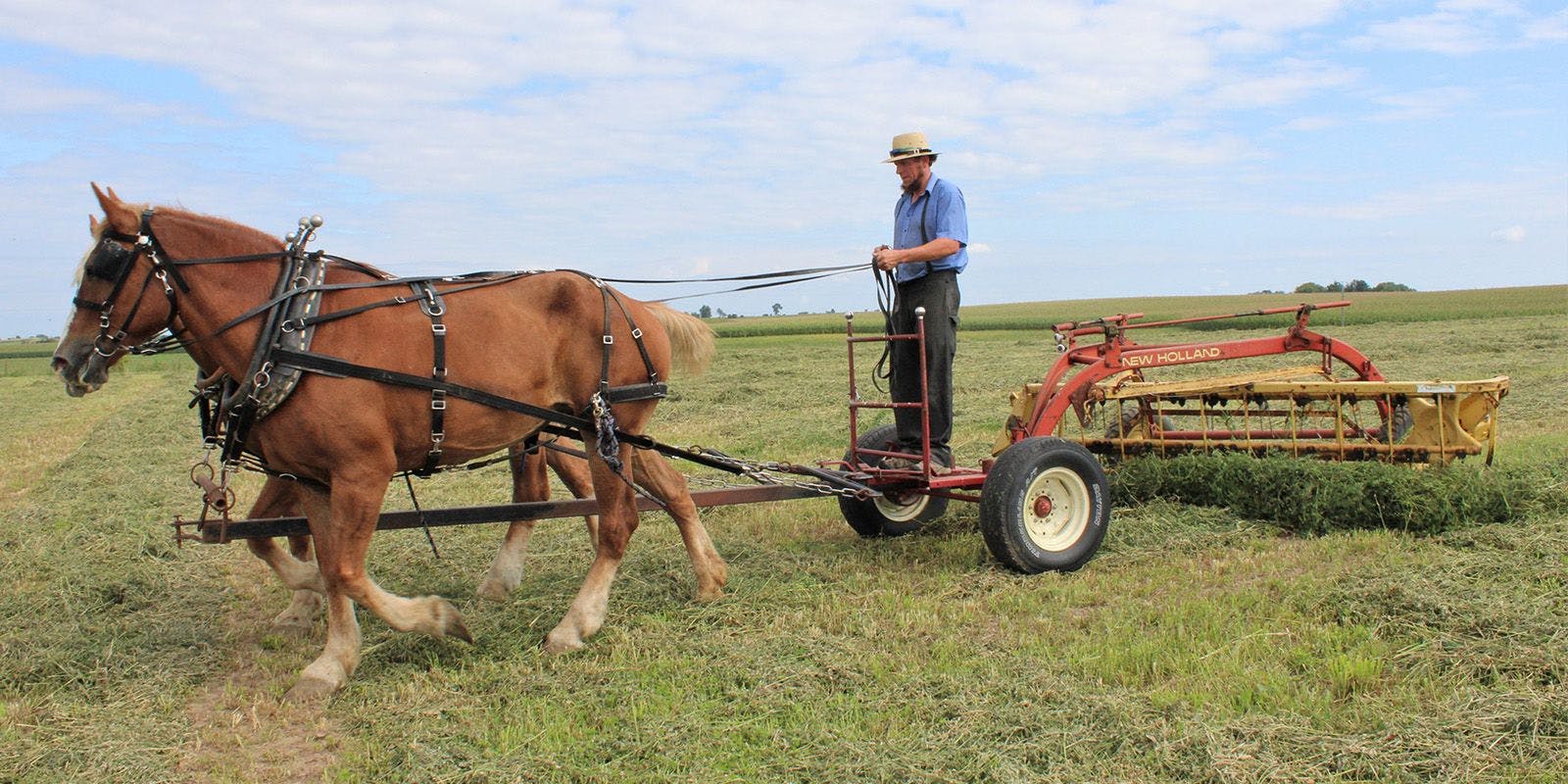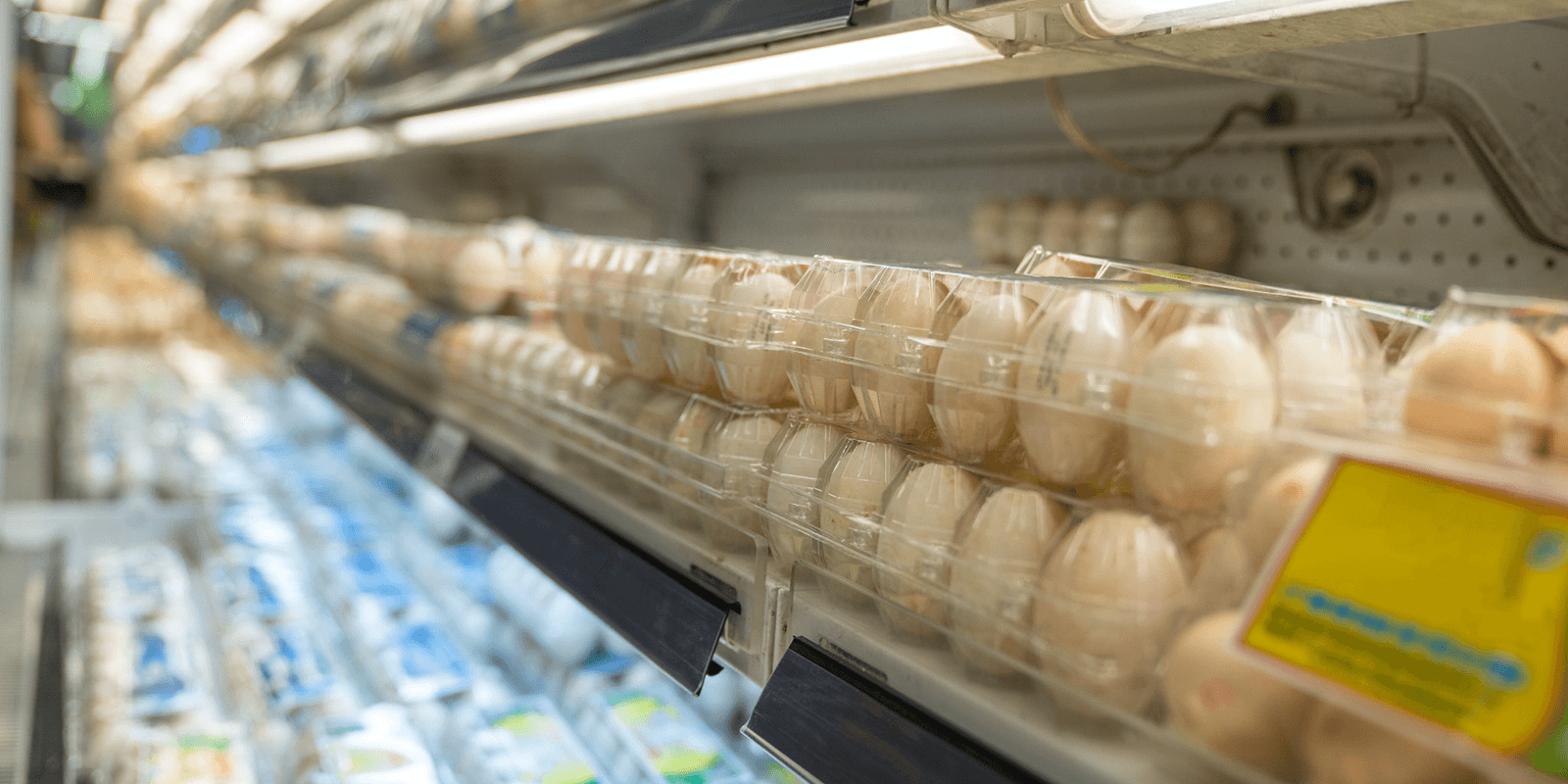
Farming
Cool Find in Storage at Amish Family Farm
January 2024 update: Ice harvesting has begun! The family has graciously agreed to let our team join winter ice cutting and storage this week. Check back soon for an update.
It’s late August in Wisconsin and it has been a hot summer. The area is facing extreme drought and the sun is shining bright. Walk into the egg-loading dock off of Joas Lambright’s chicken barn and you feel the drop in temperature. There is no fan, there is no air conditioning. There is, however, a room with a massive stash of ice.
You see, Lambright is an inventor of sorts. His Amish community does not use electricity and he has a knack for figuring out ways to make life on his small organic farm in the hills of southwest Wisconsin sustainable and practical.
His family is one of more than 1,600 Organic Valley farms dedicated to protecting where your food comes from.
The cache of ice in the icehouse is what’s left from the hard work Lambright and his family of six put in for a few days eight months before. In January, they visited the spring-fed pond out back. Here they take a saw to the ice when the temperature is just right — the colder the ice, the higher the quality. (A zero-degree morning with a high temp of 20 F is ideal for harvesting ice.)
When asked how the family stays warm during these two days outside in what can be brutal Wisconsin winters, Joas responded with a smile, “How do I keep from getting too warm?” It is hard work.
“I am warm, my back is sore, and by the end of the day I am ready to be done,” he said.
After sawing ice into blocks, the family, and community members who often help prep the ice, put the 60-plus-pound squares of ice on a horse-drawn wagon and back it to the dock. They push the ice down a slide and haul it into the icehouse.
Icehouses, or ice houses, are designed to store ice and keep food and goods frozen or chilled through the year. They were often used before the refrigerator was invented.

Huge chunks of ice hardly show signs of melting in the Lambrights’ icehouse in this photo taken in August.
The ability of Joas to make an icehouse from scratch is a prime example of his inventiveness.
The icehouse is surrounded by another entrance to help insulate the room that by the end of the harvest will hold about 80,000 pounds of ice. Joas carefully designed and built the icehouse keeping proper airflow, drainage and insulation in mind.
The homemade icehouse has two vents that can be opened to let the proper amount of cold into the adjoining egg cooler.
A temperature recorder ensures the eggs that end up on store shelves are kept at 34 to 45 F — the required temperature. When the Organic Valley truck picks up eggs, the driver ensures the eggs were at the required temps.
That’s just one way Organic Valley ensures quality products. Because everything we do is organic, toxic chemicals are kept off of our farms and out of our animals’ feed.
The family has a second Amish-style icehouse to keep its provisions cool. It is attached to the house, and a refrigerator that is not powered by electricity is inset into the kitchen wall. Ice from the adjoining icehouse cools the refrigerator.

The Lambright farm
Why Become a Chicken Farmer?
Joas and Rhoda Lambright moved to Wisconsin from Indiana and joined Organic Valley in 2015. They liked the sense of community in the area and had long considered chicken farming. It wasn’t the best option in Indiana.
“I see myself as more of a mechanic than a farmer,” Joas said while leaning on the wall of a barn that he built using upcycled garage doors.
A self-proclaimed “unique man,” Joas has a shop full of equipment for woodworking, fixing buggies, welding and more. Look around the farm and you see inventive pulley systems, cranks and chicken feeders that he designed and crafted (including the hand crank that runs the conveyor to transport eggs from the coop to the egg-gathering room).
His workshop is located in such a way that he can run over and check on the chickens at any moment. He does this often, including deep into the night when he lights the coop with lanterns.
Chicken farming is good, wholesome work, and Joas and Rhoda enjoy the responsibility that comes with it.
“It provides chores, but it is more flexible for the family,” Joas said, noting collecting eggs and caring for chickens is more laid-back than dairy farming. “There is more forgiveness.”
About 6,000 chickens live on their small organic family farm. Six thousand is small in comparison to industrial farms that often house hundreds of thousands of chickens that are kept indoors. On that sunny August day, the Lambright chickens were freely expressing their natural behaviors — roosting in willow trees that grace the chicken yard, running around in the green grass and pecking away at whatever they desired.
As Joas chatted, he easily picked up a hen while other chickens curiously watched.
“They are happy,” he said as the hens surrounded him. “Look at this — they are happy."
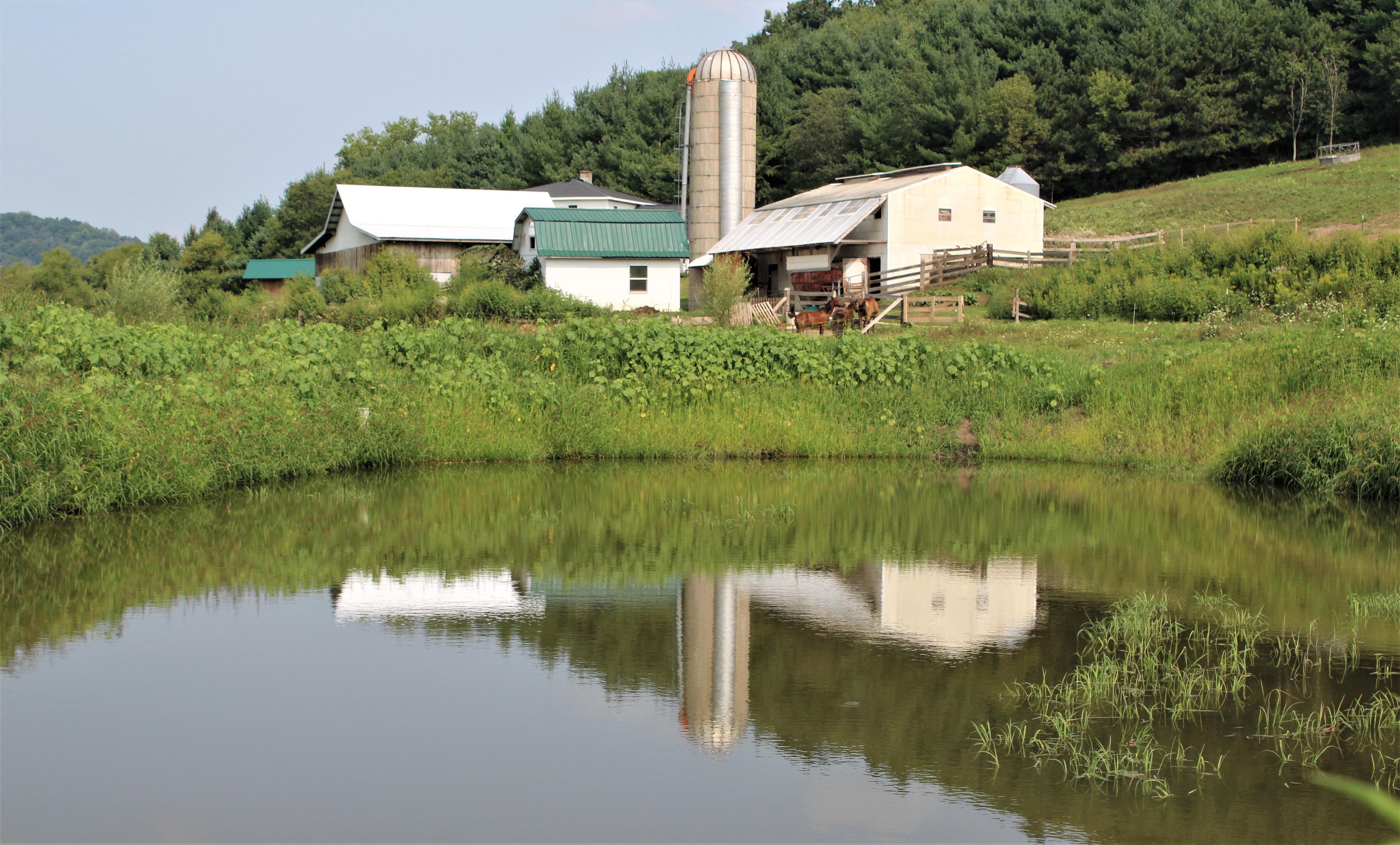
The reflection of a neighbor’s farm is the backdrop to the Lambrights’ pond. Once the pond freezes, the family will harvest ice from it.
Ice Melts in the Icehouse and Days Grow Cold
What started as 80,000 pounds of ice to keep the cooler at the correct temperature for eggs is about half full as fall approaches. The ice will surely make it until the next harvest.
Some farmers use traditional cooler systems, others use cellphones to regulate cooler and barn temps, and some use solar. While they must adhere to co-op and organic quality standards, Organic Valley farmers are given the flexibility to run their farms in ways that meet their needs.
“We are not cookie cutter in the marketplace,” said Mary Peters, who manages Organic Valley’s egg team. “It’s beautiful that our farmers do what is best for their families, communities and animals without having to go big or get out.”
Factory farms may be able to produce millions of eggs per day, but Organic Valley believes in providing ethically sourced foods. Since forming in 1988, Organic Valley has been on a mission to save small organic family farms by providing a stable and sustainable market for organic dairy, eggs, meat and produce.
Egg sales are the Lambrights’ main source of income, and they are passionate about providing quality eggs for your family. Their organic chickens spend their days pecking at bugs, bathing in dust and roaming the grasses at this small organic family farm.
The spring-fed pond out back may sit woefully low from the brutal summer heat, but soon it will be rejuvenated as summer turns to fall and the chill of winter sets in. Then you will find the Lambright family back on the ice preparing for another summer.
*Ice harvesting has begun! The family has graciously agreed to let our team join winter ice cutting and storage. Check back for updates!
Until then, try Rhoda’s delightful Amish Egg Salad Recipe that Joas can’t stop talking about! (Our team got together to whip up a batch. We followed the recipe exactly as is and agree, it is so good — the most delicious egg salad ever!)
Hearty Amish Egg Salad Recipe
Salad:
6 Organic Valley Eggs (hard-boiled, peeled and cut into cubes)
1/2 cup potatoes (cooked, peeled and cut into small cubes)
1/4 pound smokey links or cubed ham
1/4 cup finely chopped celery
1/4 cup Organic Valley Colby Cheese (shredded)
1/8 cup pickle relish
Mix all salad ingredients in a bowl and set aside.
Dressing:
1/3 cup mayonnaise
1/4 cup sugar
3/4 teaspoon salt
2 teaspoons mustard
2 teaspoons liquid smoke
1/3 teaspoon Worcestershire sauce
Mix dressing ingredients in a separate bowl from the salad mixture.
When both are complete, combine salad ingredients and mixed dressing and enjoy!
An antique typewriter fanatic and chicken mom who treasures time outdoors admiring all that nature has to offer, Jennifer McBride is Rootstock’s editor. McBride spent 15-plus years as a journalist and newspaper editor before finding her niche with the nation’s leading organic dairy cooperative. Contact her at Rootstock@organicvalley.com.
Related Articles
- Tags:
- farm life,
- organic & sustainable living















